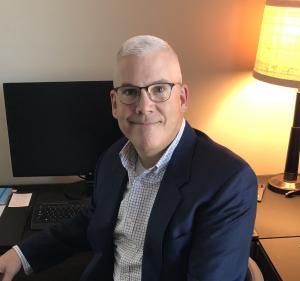We are experiencing one of the most challenging times in history for the educational industry with the COVID-19 pandemic, the resulting economic impact and the corresponding downturn in global financial markets. With so much uncertainty, how can school leaders prepare for a future that is completely unpredictable?
And the big question: From both a long-term and short-term perspective, what are the three to five most important strategic items that school leaders must focus on for maximum financial sustainability over the next 12-18 months?
While there is no way to know for sure what the next 12-18 months will look like, there are some fairly reasonable assumptions that schools can make to start the planning process:
- The stock market could again drop below the historic lows seen in March.
- Some experts are predicting that the markets could be down by 30% or more, similar to the 2008-2009 economic crisis, thereby impacting endowment market values and spending for the next one to three years depending on schools’ spending formulas.
- COVID-19 reemerges in a second or third wave based on health experts’ premise that we may now be in a second wave as the virus may have hit the U.S. earlier than initially thought.
- Schools will be delayed in opening in a traditional manner for the fall or may be entirely virtual for the entire 2021 fiscal year.
- Donor meeting, dinners, galas, major gift solicitations and other philanthropic-focused events will be canceled or drastically curtailed.
- Ongoing annual fund giving will significantly decrease and major gifts solicitations and commitments will slow, decline and/or stop entirely given that families need to brace themselves for impacts to their own household budgets.
- Overall philanthropic support will contract by as much as 15% to 50%.
- Families (new and current) will need significantly more financial aid: one recent industry survey of over 200 independent schools shows that 80% of schools plan to increase their financial aid budget next year;[1] and,
- Staff and faculty will experience their own hardships and are likely to request additional support due to unemployment and weakened household financials.
So, what are the top three to five steps or actions that schools should consider regarding financial sustainability over the next 12-18 months?
- Remain focused on communications both internally and externally. During this unprecedented time, school financials will take on more importance and continuous communication to the entire school community (i.e., employees, students, donors, alumni, volunteers, vendors) is vital. Schools should develop a weekly communication calendar to ensure they stay on track for all stakeholder audiences. Talking with major donors and friends to keep them involved and up to date on all aspects of the school’s financial foundation is extremely important. And, holding virtual “state of the school” financial discussions with these constituencies with monthly updates will be expected and appreciated.
- Understand your school’s liquidity. Cash flow will be vitally important to manage carefully over the next 12-18 months as will ensuring an understanding of the difference between a fiscal budget and the realities of cash flow. Fewer than half of independent schools believe they will come in “on budget” for the current fiscal year, while 31% expect a budget deficit and 12% are not sure whether they will meet budget projections next year.[2] Few schools have significant cash resources in reserve, but a good rule of thumb is to have at least one year’s worth of total expenses in liquid or near-liquid assets, just in case they are needed.
- Expect a huge and sustained increase in financial aid expense. All schools that we have worked with over the past two months have been focused on financial aid and what the increased need will be over the coming fiscal year. It is safe to say that schools should expect a significant increase in the need for financial aid (or discounting), but projecting the actual need may be difficult until August, when schools are close to resuming the academic schedule. Class action suits against schools are already in the pipeline by families seeking refunds for last year’s tuition and fees. It is likely that schools will see unprecedented demand for financial aid, including from families who have never had to request funding. A good rule of thumb at this point is to expect a minimum of 10-20% increase in the need for financial aid funding. Work with your school’s board now to outline a set of principles for the expected increase in financial aid (or discounting) to provide management with leeway now to make rapid decisions later this summer and into the winter and spring terms.
- Focused campaigns will be required. Schools should plan campaigns or add focus within current campaigns for the coming 12-18 months. These campaign priorities are most likely to be successful when focused on assistance to students, families and employees who are impacted by COVID-19–as well as “health and wellness” campaigns for the human and institutional needs that will undoubtedly present themselves. Further, stewardship has never been more important to current, on-going and future success. Development staff should be fully be engaged and communicating with donors, alumni, parents and friends on a regular basis. Tracking these calls as metrics and developing targeted follow-up communications from heads of school must be a top priority.
- Expect lay-offs and furloughs. The business model of independent schools is based on human interaction. Most schools’ budgets are between 60-80% driven by salaries and benefits. Given this business model, schools need to expect the real possibility of laying off employees in order to meet cash flow and budget goals. This is an unfortunate and gut-wrenching outcome during a global crisis but an inevitable reality. It would be prudent to map out with the board the key principles that will guide a lay-off or furlough strategy. Be as transparent as possible with the entire school community while seeking input into those principles from faculty, staff, board members and trusted advisors.
In the most trying and difficult times, leadership becomes essential to organizational change and survival. For many independent schools, this crisis may provide an existential threat to long-term survival. Those organizations that survive will be guided by their mission and bolstered by careful, strategic planning during this crisis to emerge stronger, more focused and ready to succeed in a new and different normal.
[1] NBOA Flash Survey of 228 independent schools, COVID-19 Financial Implications for Independent Schools (April 3-8, 2020).
[2] Ibid.
 About David Hanson
About David Hanson
Prior to founding Winthrop & Associates, LLC, David spent 20 years serving academic and non-profit organizations, including serving in dual positions (chief financial officer and chief risk officer) for Phillips Exeter Academy, where he had responsibility for a $100M annual budget and all operating functions, as well as risk management. Prior to Exeter, David was the vice president (chief financial officer) and then senior vice president (chief operating officer) for Virginia Commonwealth University. He began his career in academic leadership at Emory University, where he spent ten years in a variety of roles leading to his appointment to dual positions as associate vice president for administration and special assistant to the executive vice president. David began his professional career practicing law.
David holds a bachelor’s degree in marketing, a Juris Doctorate (with highest honors), two master’s degrees (education and business), and a doctorate in higher education management (focused on financial resource allocation and governance). David is a member of Beta Gamma Sigma and Phi Kappa Phi academic honor societies and is a double alumnus of the Fulbright Specialist Program, having served institutions in Pakistan and Scotland.
David can be reached via email at david@winthropassociates.com.
 About Philippe G. Hills
About Philippe G. Hills
Phil joined Marts & Lundy in 2011 with over two decades of advancement experience with expertise in health sciences, higher education and complex organizations. He was appointed president and CEO in 2016. Prior to Marts & Lundy, Phil served as executive vice president for development at the Livestrong Foundation and as Emory University’s vice president for development for Woodruff Health Sciences Center and associate dean for development, Emory School of Medicine. He has held other advancement leadership roles for several universities. Phil received his B.A. from The University of Tampa and M.P.A. from George Washington University.
Contact Phil at hills@martsandlundy.com



